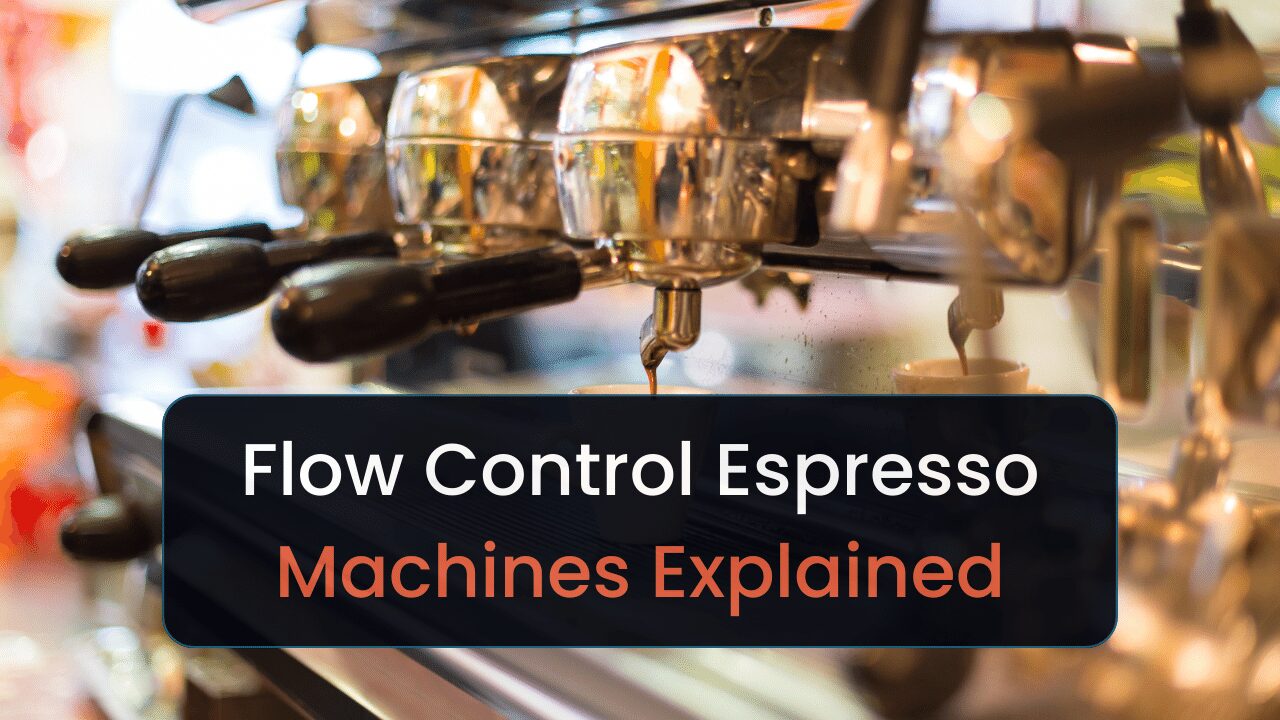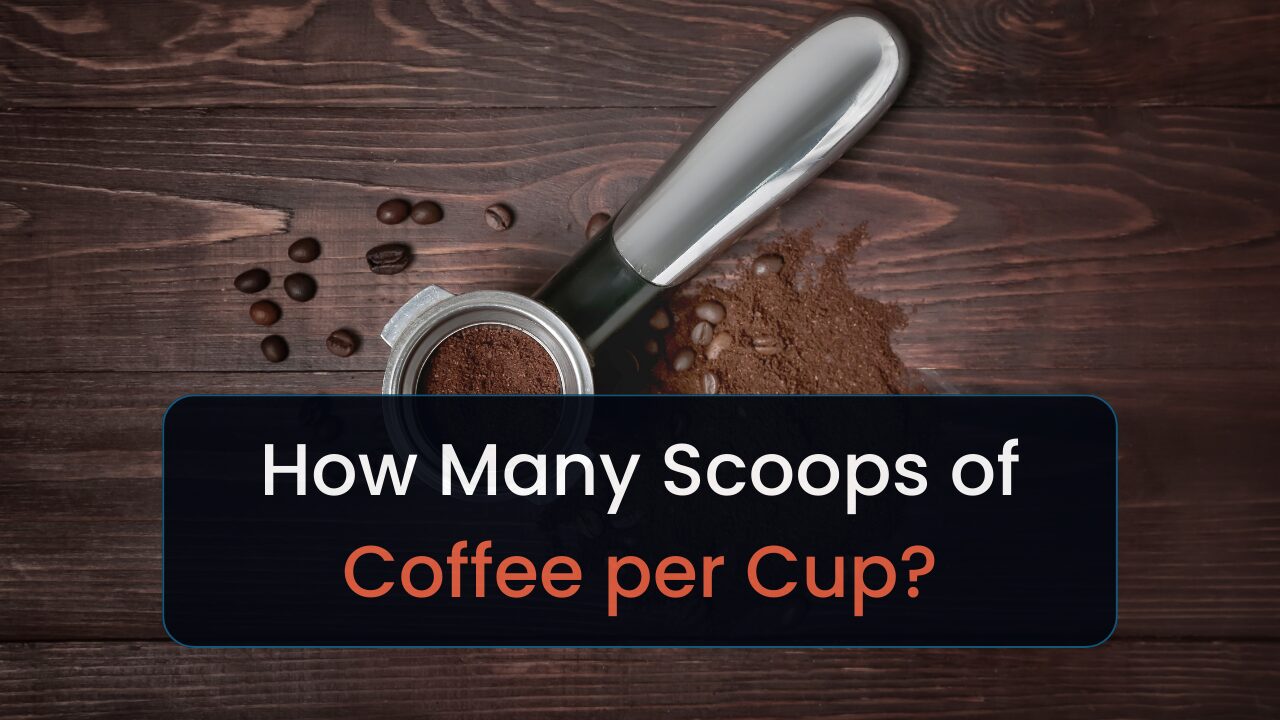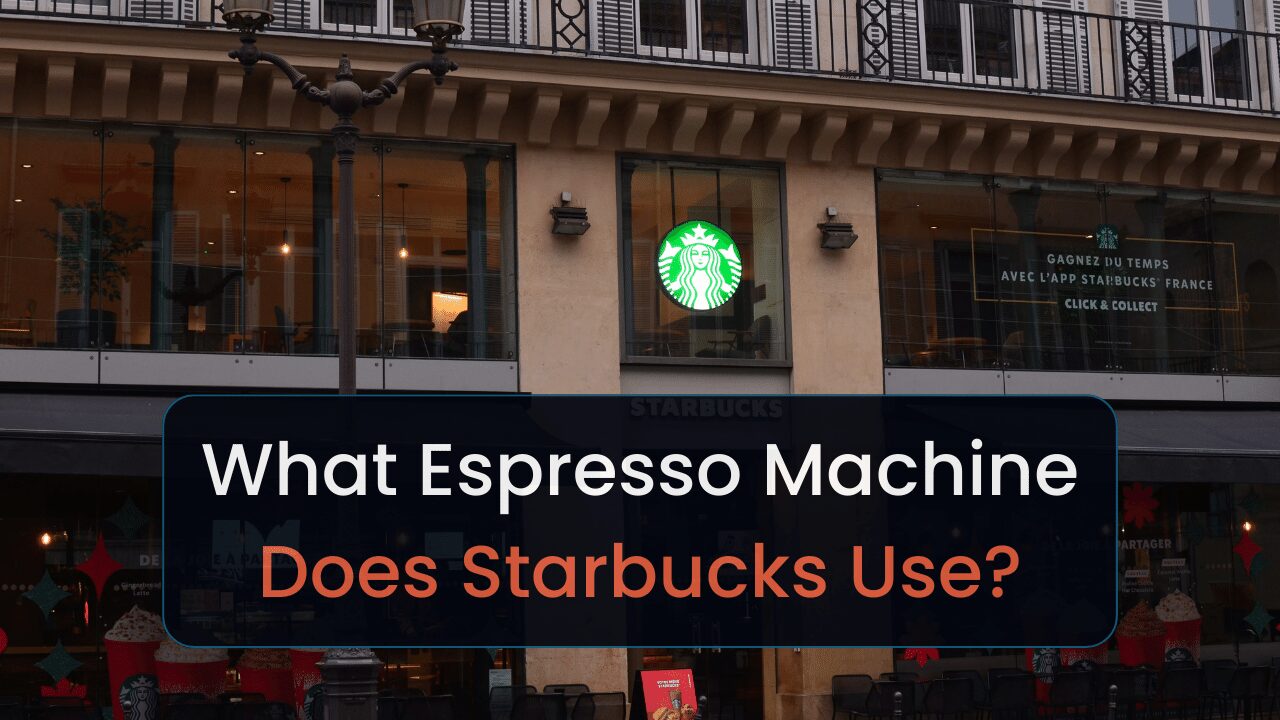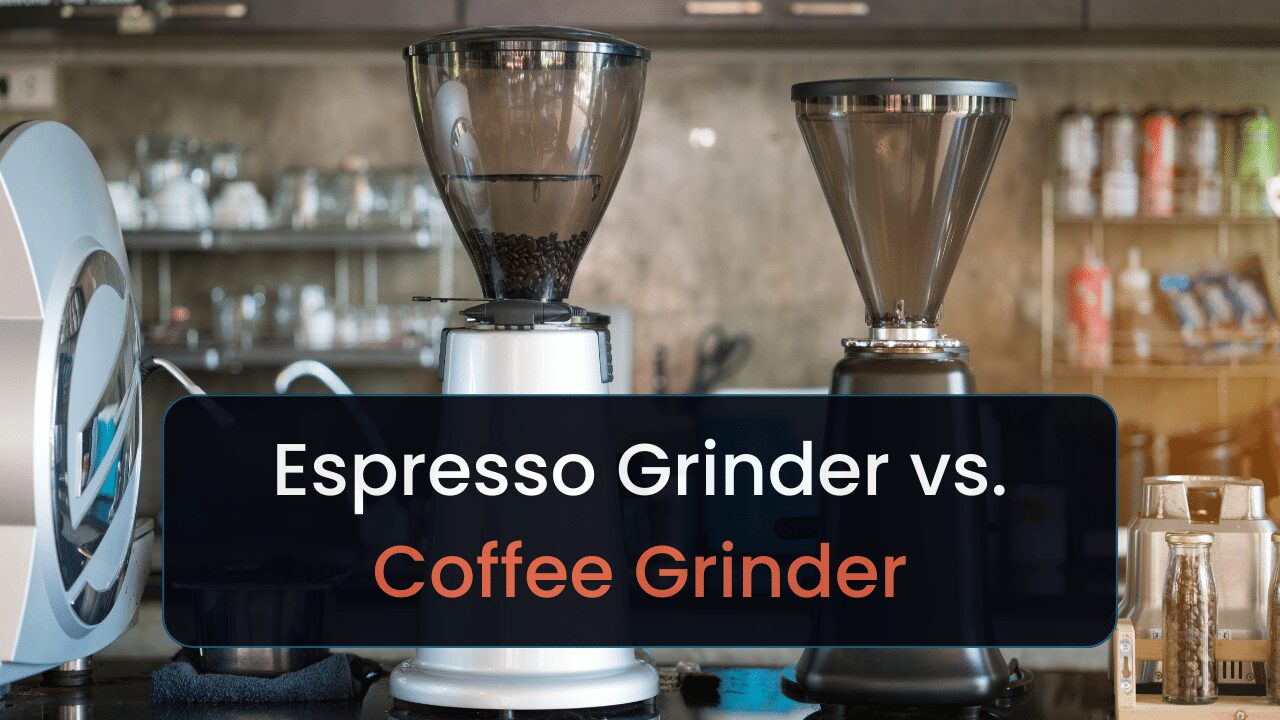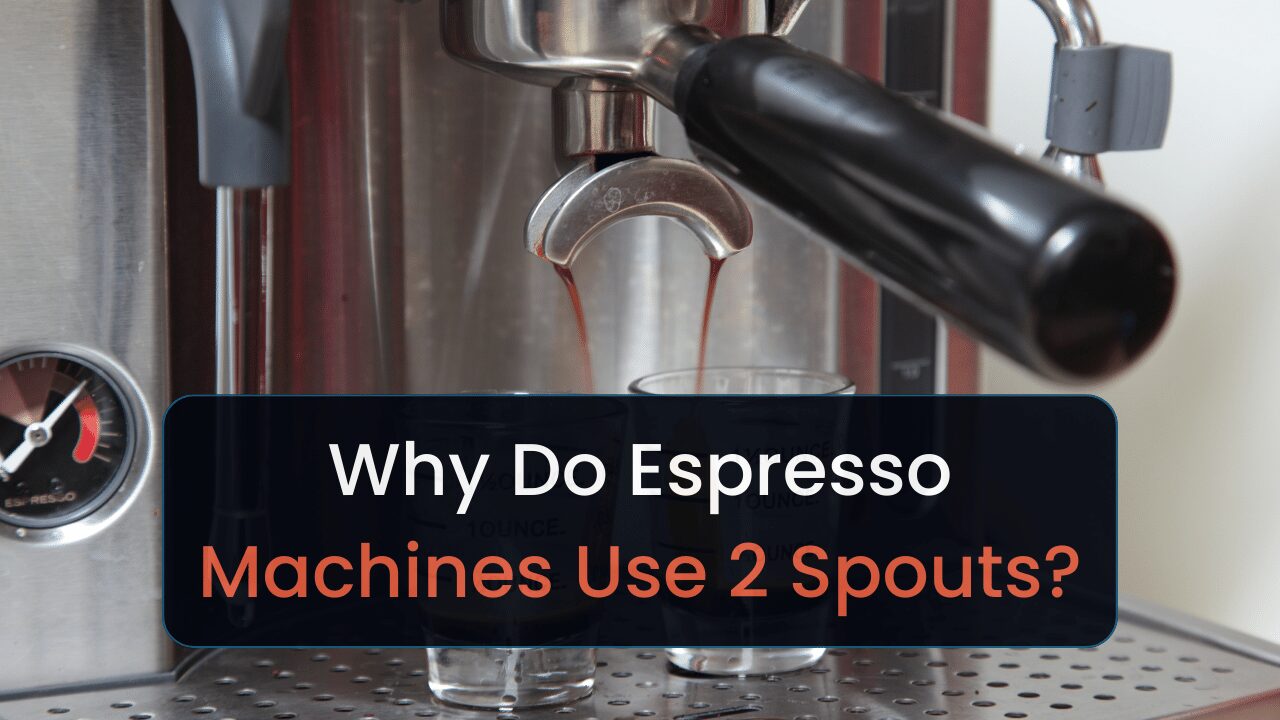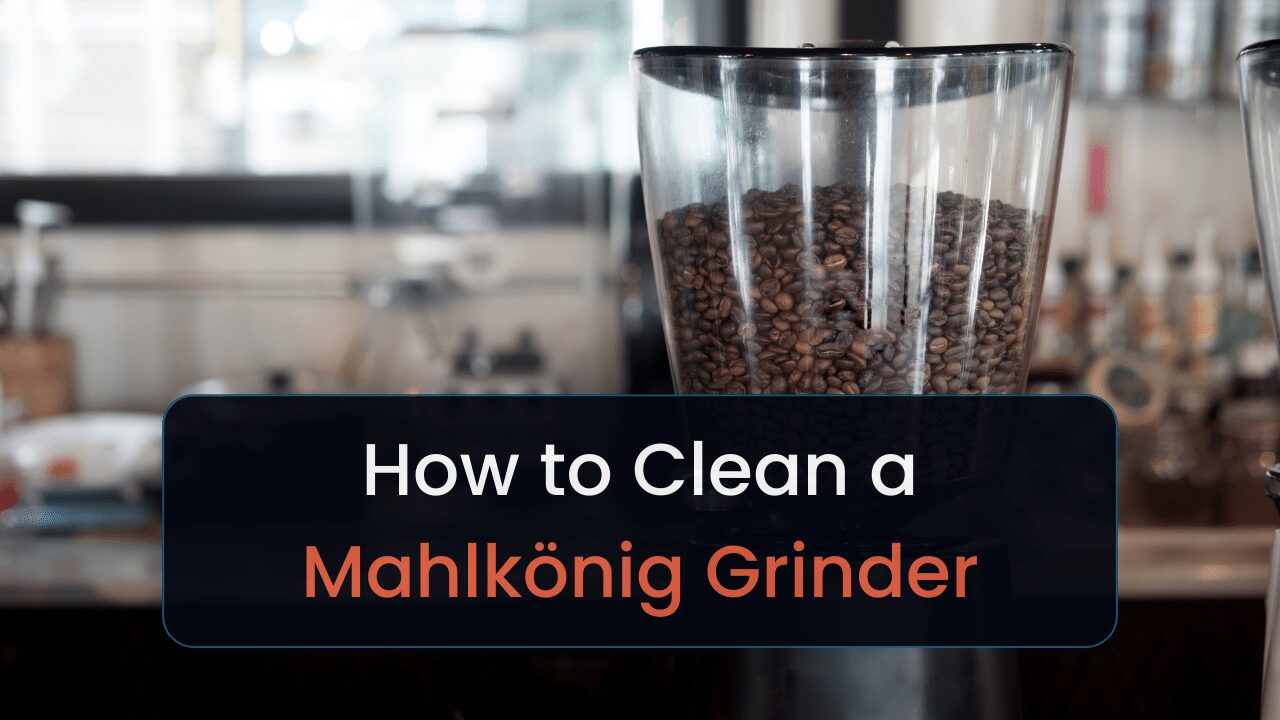This piece is an overview of the best grind-by-weight (GBW) coffee grinders. Read on to learn more.
As a former barista, I like experimenting with varying densities when brewing coffee. I can’t do that with a timed coffee grinder, which led me to search for a grind-by-weight machine. I compiled my findings in this guide.
I chose the Mahlkönig E65S GBW as the best overall because it produces fluffy grinds without clumps that don’t require additional intervention.
Making this device perfect for home users and small cafés that want to save time when brewing coffee otherwise spent on breaking down clumps. The machine’s fast speed also helps with this.
Throughout this piece, I’ll recommend a bunch of grind-by-weight grinders and provide their advantages and disadvantages. Afterward, I’ll discuss exceptional features and who they’re best for.
Let’s dive in.
Want to see more models? Check out all our Grind-By-Weight coffee grinders here.
Top Grind-by-Weight (GBW) Grinders
- Mahlkönig E65S GBW: Best overall
- Mahlkönig E80S GBW: Best for businesses
- Compak E6 Dose by Weight: Best for small businesses
- Eureka Mignon Libra: Best for Home Use
- Baratza Sette: Most affordable
Best Grind-by-Weight Grinders for Home & Business Use
The following sections will compare the pros and cons of each grinder. If the machine includes a unique feature that’ll improve your bean consistency or workflow, I’ll bring it up. Otherwise, buckle up and check out these grinders.
1. Mahlkönig E65S GBW: Best Overall
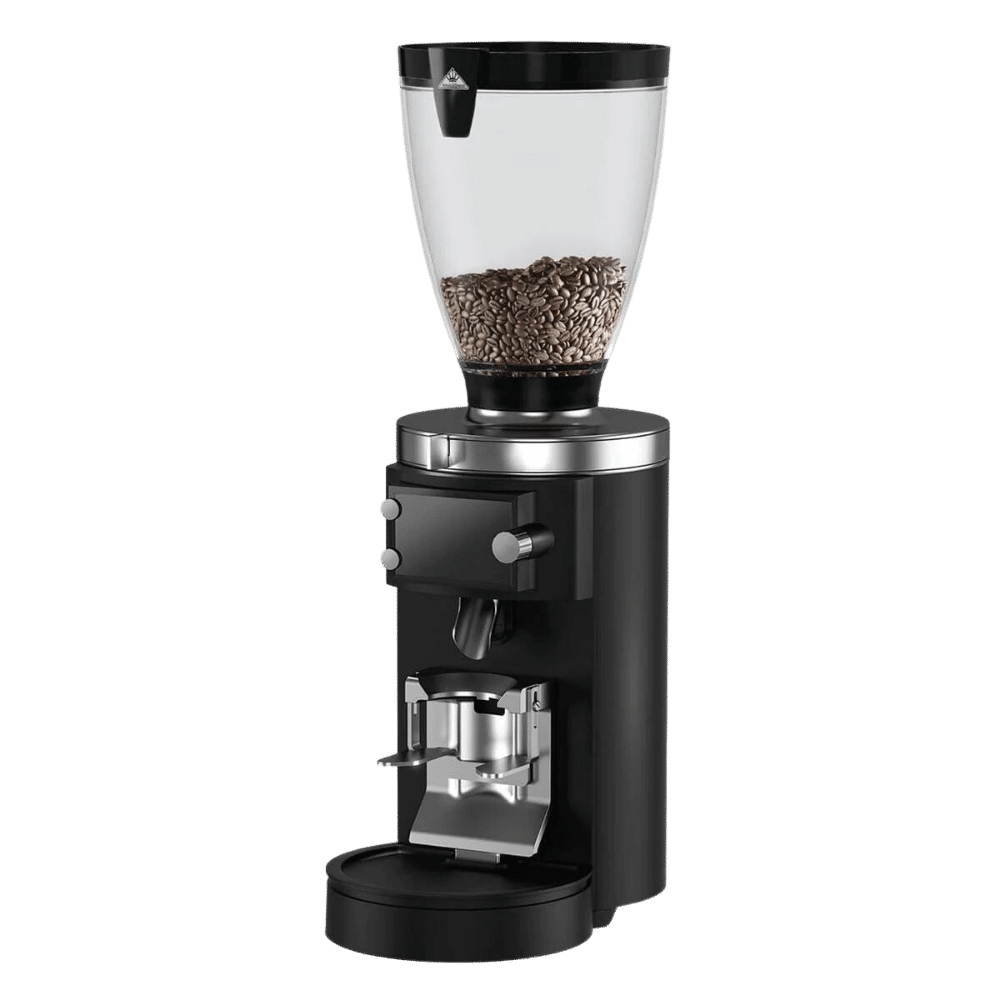
| Price | $$$ |
| Type | Flat, special steel |
| Burr Size | 65 mm |
| Grinder Dimensions | 7.7 × 24.4 × 11.1 in (D × W × H) |
| Warranty | 1 year |
| Hopper Capacity | 2.6 lbs |
| Grind Speed | 1,700 RPM |
Pros:
- Doesn’t leave much of a mess
- Excellent grind consistency
- Great user interface
Cons:
- Difficult to clean
- No coarse grinding options
The Mahlkönig E65S GBW works best for enthusiasts who want to brew espresso at home quickly and to have the best grind quality possible. Smaller cafés and coffee shops could use it, too.
Testing has shown that when using the E65S, you won’t need to use a WDT tool or tapping to break up clumps in your portafilter. Because the grinds come out super fluffy and without clumps. Saving you time when brewing.
The grinder’s also quick. It’ll grind 5–6 grams per second.
After you grind, it doesn’t leave much of a mess behind. However, you’ll still get a few grams of retention, which isn’t ideal. And it’s not an ideal situation since you’ll need tools to disassemble the grinder to clean it.
But the digital display makes up for that. In addition to showing the gap distance between burrs up to 0.002 mm, you’ll also see the burr’s temperatures. That’s great for fine-tuning grinds and knowing whether your machine’s running too hot.
While it’s amazing for grinding espresso, it’s not exceptional for coarse grinds. You can’t use this for any other brewing method than Turkish coffee and espresso.
If you’re looking for a grinder for a business, you’ll want to consider this next device.
2. Mahlkönig E80S GBW: Best for Businesses
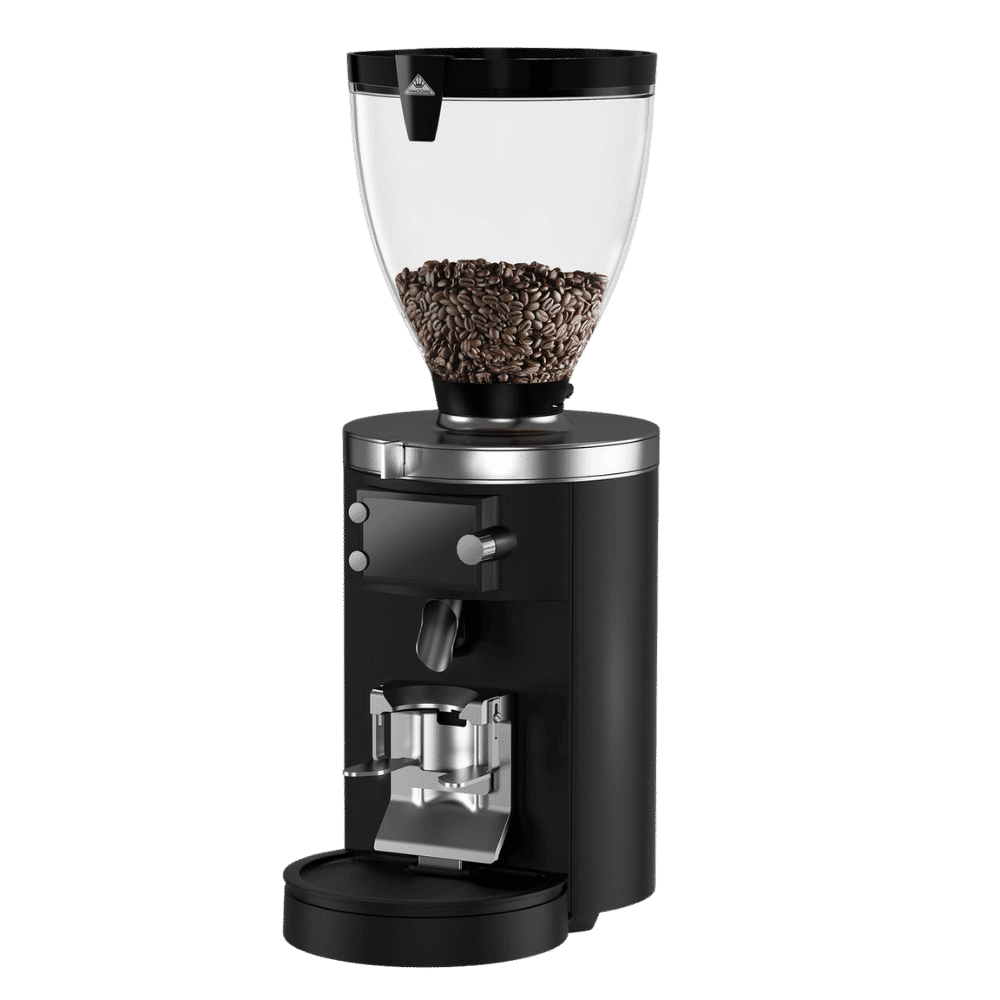
| Price | $$$ |
| Type | Flat, special steel |
| Burr Size | 80 mm |
| Grinder Dimensions | 9.45 × 24.8 × 13.39 in (D × W × H) |
| Warranty | 1 year |
| Hopper Capacity | 3.97 lbs |
| Grind Speed | 1,700 RPM |
Pros:
- Temperature control system
- No clumps
Cons:
- No titanium burrs
- Large and heavy
The Mahlkönig E80S GBW is excellent for coffee shops, cafés, and restaurants with high volumes of customers due to its larger burr size.
The massive 80 mm burrs allow the E80S to grind 7–8 grams per second. Allowing you to support more demand compared to the E65S. Meanwhile, you’ll get all the quality-of-life features the previous device includes.
For instance, there’s the temperature control. It allows you to quickly grind beans without overheating your grinder. Which would shorten the device’s lifespan and potentially ruin your beans’ flavor.
What are “special” steel burrs? Special steel has a higher carbon content to extend the burr’s lifespan. Making it superior to regular steel burrs. However, it’s not superior to titanium-coated burrs.
However, with titanium burrs in other grinders, you risk the coating chipping off and getting into your beans.
Will you have to worry about clumps? No. All grounds come out super fluffy, which means there’s no need to use a WDT tool, which could improve productivity.
Since you and your barista won’t need to waste time breaking down clumps.
And though the grinds come out super fluffy, the grinder isn’t ideal for brewing methods that require coarse grinds like cold brew or nel drip. You’ll need a separate grinder if your business serves non-espresso drinks.
This device will take up a lot of room and weighs a lot. Making it not ideal for small kitchens or businesses with little counter space.
Do you need a more affordable grinder? Check out the next pick.
3. Compak E6 Dose by Weight: Best for Small Coffee Shops
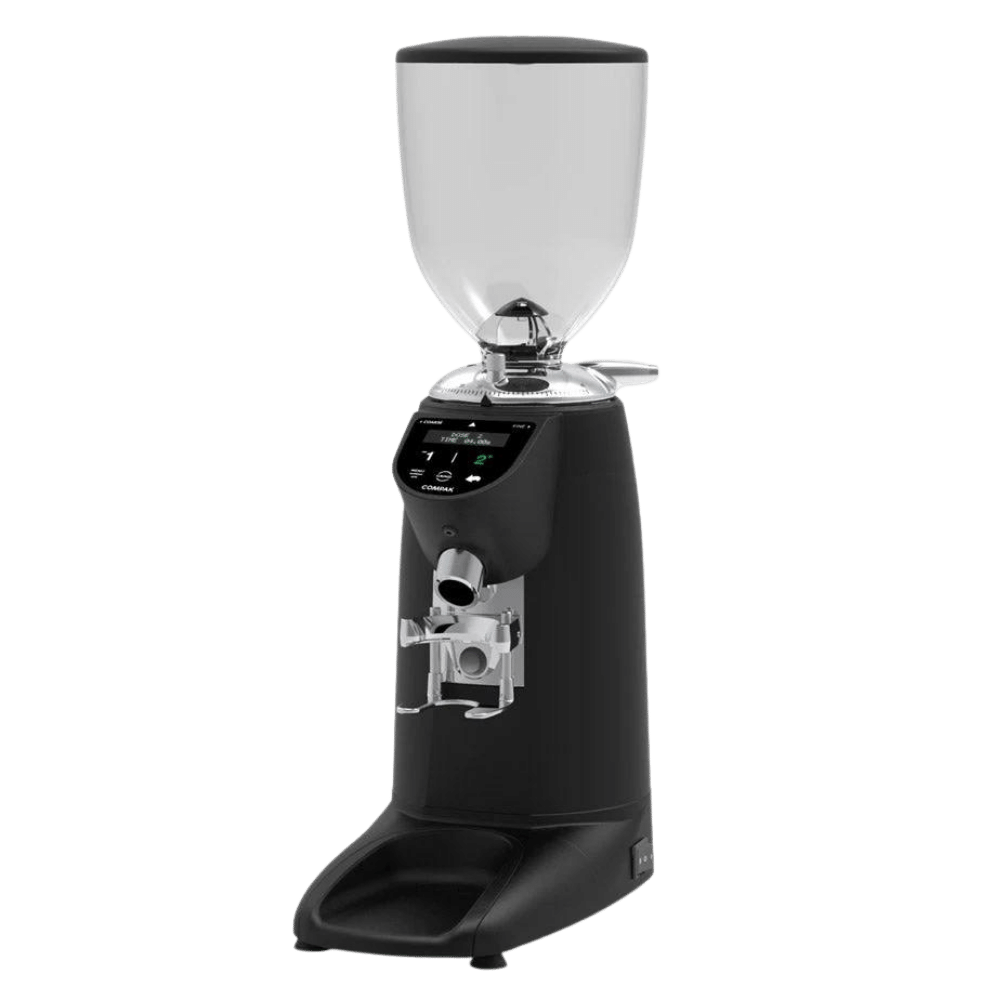
| Price | $$ |
| Type | Flat, steel |
| Burr Size | 64 mm |
| Grinder Dimensions | 8.46 × 15 × 25 in (D × W × H) |
| Warranty | 1 year |
| Hopper Capacity | 3.7 lbs |
| Grind Speed | 1290 RPM |
Pros:
- Burr replacement alarm
- Integrated fan
Cons:
- Not very customizable
The Compak E6 Dose by Weight works best for small- to medium coffee shops, cafés, and restaurants who want an affordable grinder.
The 64-millimeter burrs, partnered with a built-in cooling fan, make it a massive upgrade compared to the Compak E5. And its price makes it obtainable for smaller businesses that don’t have massive budgets.
The fan will prevent your machine from overheating, which could damage the device, along with your coffee beans. Saving you from having to replace your device sooner. And from your customers sipping burnt-tasting coffee.
Depending on your business’ capacity, a steel burr should last 5–7 years with good care [1]. Various factors, such as frequency of use and the presence of foreign objects, can reduce your burr’s life.
In that scenario, you likely don’t want to guess whether your burr needs replacing and if you should waste money. The E6 will notify you when it’s time to replace the burr.
The E6 doesn’t have many customizable features. For example, you cannot adjust the burr carrier alignment or the portafilter holder height. This can be a problem for some people who prefer more control over their grinder settings.
Do you prefer having a device for home use? Consider the next pick.
4. Eureka Mignon Libra: Best for Home Use
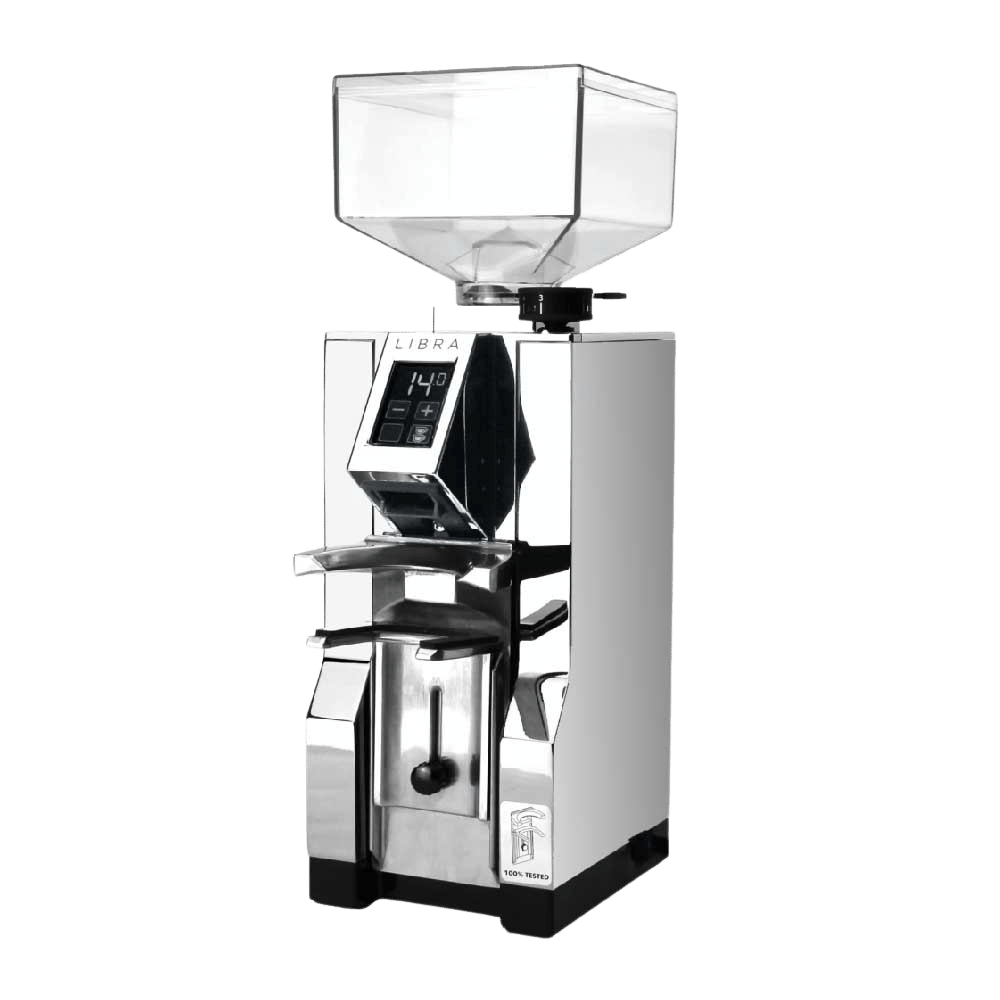
| Price | $ |
| Type | Flat, hardened steel |
| Burr Size | 55 mm |
| Grinder Dimensions | 7.6 × 4.9 × 16.9 in (D × W × H) |
| Warranty | 1 year |
| Hopper Capacity | 10.58 oz |
| Grind Speed | 1350 RPM |
Pros:
- Great ergonomics
- You don’t lose burr position when cleaning
- Affordable
Cons:
- You’ll need a funnel attachment
- Only works well for espresso
The Eureka Mignon Libra is an excellent grind-by-weight coffee grinder for at-home baristas who don’t want to spend more than $1,000 on a device.
There are few grind-by-weight devices—especially in the United States—you’ll find under this price range. I’ll cover the other grinder next.
The Mignon Libra only has a gram of retention, and for the most part, the grounds will come out even. However, you’ll need to use a WDT tool to break up clumps. Since you’re not paying more than $1,000 for a machine, you don’t get the luxury of clumpless grinds.
The portafilter forks have a rubber coating to prevent the machine’s vibrations from jerking around the portafilter. Making it great for ensuring there are no off measurements during grinding.
And many higher-tier grinders on this list require you to unscrew the forks to move them. With the Mignon Libra, you twist a latch to loosen the forks. It’s much more convenient.
This grinder’s also exceptional for cleaning because after opening and closing the burrs to clean them, the burrs remain in position. That’s because the machine’s regulating knob moves the lower burr, and the upper remains in a fixed position.
Moreover, you’ll only need to remove 5 screws to access your machine’s innards.
The biggest downside to this machine is the stray grounds. Unless you get a dosing funnel attachment, you’ll lose around a gram of coffee grounds. I recommend getting an attachment from Eureka and not a cheap one from Amazon.
Because the cheap ones from Amazon have curves in them that will make the grounds inside your portafilter uneven.
This grinder also works well for grinding espresso. It doesn’t play well with dosing cups, since it only works with affixed portafilters. Because you’ll get an error message saying there’s no portafilter attached.
Do you want to grind for other brewing methods? Consider the last pick.
5. Baratza Sette 270Wi: Most Affordable
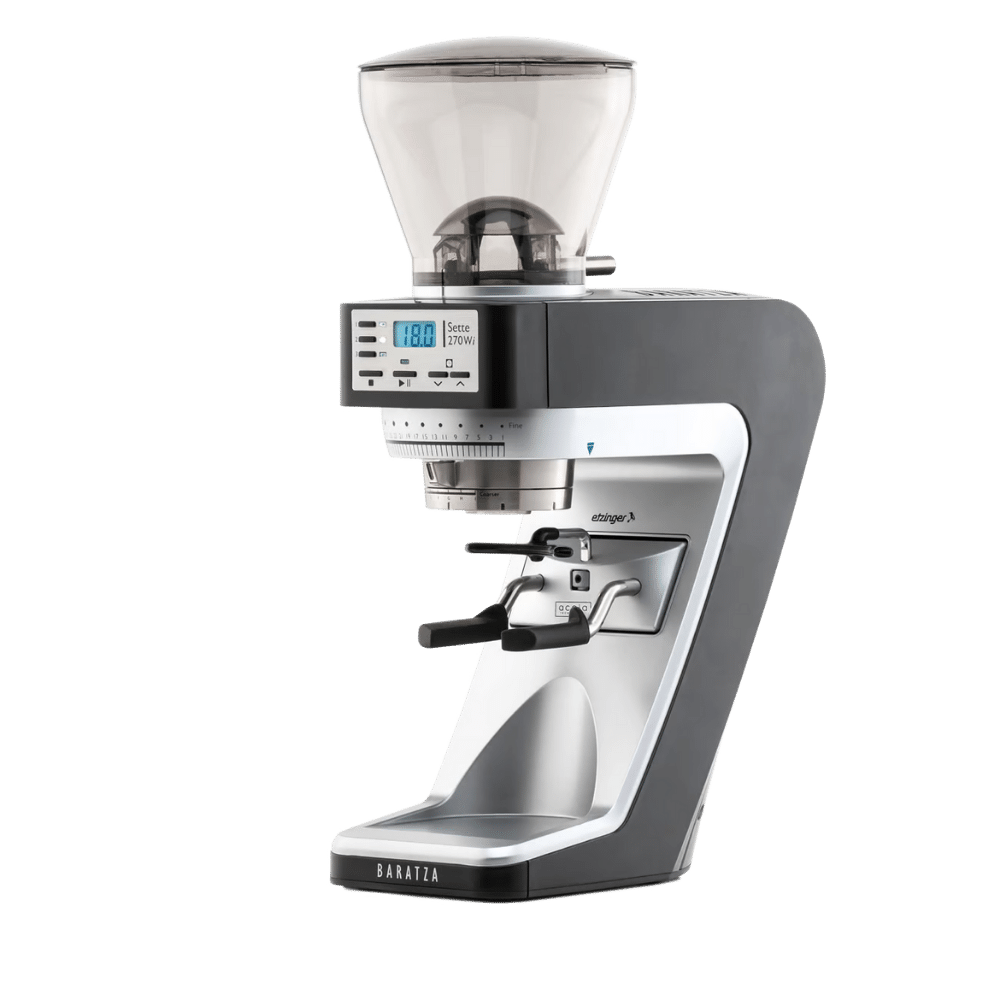
| Price | $ |
| Type | Conical steel |
| Burr Size | 40 mm |
| Grinder Dimensions | 5.12 × 9.45 × 14.96 in (D × W × H) |
| Warranty | 1 year |
| Hopper Capacity | 10.6 oz |
| Grind Speed | 650 RPM |
Pros:
- Easy to clean
- Grinds fast
Cons:
- Complaints about weighing feature accuracy.
- Only ideal for espresso
The Baratza Sette works best for home baristas who want an entry-level grind-by-weight device that’ll work for multiple brewing methods.
However, some folks say that this grinder only works well for grinding espresso, since they’ve found a decent amount of fine grounds mixed in when grinding coarse. The Sette is a good option if you’re not that picky and don’t want to spend $2,000-$4,000 on a device.
Many folks believe that the 270W provides more accurate grind results. Based on testing, that seems true. But, it doesn’t give you as much room to experiment with different densities when using various brewing methods.
It’ll also grind 3.5–5.5 grams per second. Putting it on par (speed-wise) with other machines on this list despite not having the highest revolutions per minute.
Whether you’re a home user or a small coffee house, you’ll love that this device has no dead space. Meaning no coffee grounds will get stuck under your grinder’s burrs and housing. Making it much easier to clean.
Check out our buyer’s guide to learn whether you’re getting the right grinder.
Factors to Consider When Shopping for a Grind-by-Weight Grinder
Consider these factors when shopping for a GBW grinder:
| Factor | Description |
| Hopper Size | Bean freshness and number of grind cycles before needing a refill. |
| Ease of Use | Whether it’s beginner-friendly. |
| Price | Machine cost. |
| Burr Type | Determines grind consistency. |
| Dose Weight Accuracy | How accurate your grinder is. |
There aren’t many grind-by-weight grinders on the market. The ones available typically use steel burrs. This burr material’s more durable than ceramic, which many time-dosed grinders will use [2]. However, they usually heat up fast and can burn your beans.
Leading to a bitter flavor. Many high-end dose-by-weight grinders will have integrated fans that’ll cool the burrs to prevent this from happening, though. Though, it’ll lead to an increase in price.
Most GBW grinders will also have a 1-year warranty. That could change since the time of writing this article. Check the machine’s warranty policy when shopping to see how long it’s covered.
Otherwise, keep reading to get more details on factors to consider when shopping for this type of coffee grinder.
1. Bean Hopper Size
Most grind-by-weight coffee grinders include large bean hoppers. Allowing you to grind several pounds of beans without refilling the hopper. However, you won’t have as fresh of beans compared to using a single dosing device.
That’s because your beans are now exposed to oxygen and sunlight. And none of the hoppers I’ve seen on GBW machines have UV-blocking coatings or airtight hoppers.
You don’t have many choices in this area. But it’s a factor to consider.
Here’s a factor you do have control over.
2. Ease of Use
A grind-by-weight grinder that’s easy to operate can help you save time in your morning routine or during busy service periods. Intuitive controls, quick grind settings adjustments, and easy-to-clean components can streamline the grinding process.
Allowing you to focus on other aspects of coffee preparation.
Also, having clear weight indicators and precise grind adjustments eliminates guesswork and allows you to grind your beans with less of an error for margin.
Devices with such features could impact its price. Let’s see how much these machines cost.
3. Price
Lower-end grind-by-weight machines will start at around $600 and can go as high as $5,000. Factors affecting the device’s cost include features, brand, and home versus commercial use.
Business-use GBW grinders will start at $1,000—for smaller businesses. And those used by coffee houses with more foot traffic will cost thousands.
This factor will also impact your machine’s price.
4. Burr Type
You have 2 options with burrs, flat and conical. Flat burr grinders are best for those who want a consistent grind and are willing to pay a premium for it. Conical burr grinders are best for those who want a quiet and affordable grinder.
Flat burrs are 2 flat discs that grind the coffee beans together. Conical burrs are 2 cones that grind the coffee beans together.
Pros of flat burr grinders:
- Consistent grind
- Durable
Cons of flat burr grinders:
- Expensive
Most dose-by-weight grinders will use flat burrs and typically cost more than $700. If you’re using it for a business—whether large or small—you’ll need a flat burr for the best-tasting coffee.
Pros of conical burr grinders:
- Affordable
- Easy to clean
Cons of conical burr grinders:
- Less consistent grind
Grind by weight devices using conical burrs will usually cost under $700. Though, you don’t have many options. However, it’s a great option for home baristas who want more accurate dosing, but don’t mind having slightly inconsistent grinds.
This next factor’s also critical when shopping for a machine.
5. Dose Weight Accuracy
Look for grinders that can deliver the desired weight within a small range (e.g., 0.1–0.2 grams).
Most manufacturers should specify their machine’s dose weight accuracy. If it doesn’t, type the name of the device you’re considering into a search engine and see what forum users have to say. They’re typically thorough when it comes to talking about these machines.
Check YouTube if you can’t find any forum posts. However, many videos I’ve seen don’t discuss dose weight accuracy. However, I’m sure they’re out there.
Do you not know what I’m talking about?
Dose weight accuracy refers to the ability of a grind-by-weight grinder to deliver the desired amount of coffee grounds consistently. This is an important factor for achieving consistent and flavorful coffee, as the amount of coffee you use can significantly impact the extraction process.
There’s nothing else to cover. Thanks for reading.
Conclusion
Let’s review our top 3 picks:
- Mahlkönig E65S GBW: Exceptional device for home use
- Mahlkönig E80S GBW: Grinds more per hour
- Compak Dose by Weight: Affordable device for businesses
I chose the Mahlkönig E65S GBW as the best overall because it’s more affordable than the E80s, which makes it more accessible to home baristas. Meanwhile, you’ll have burrs that last for years and deliver consistent grinds every time.
If you want more options, check out our page with the Grind By Weight grinders we offer.

